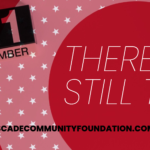Did you know that more than a third of all charitable giving occurs in the last three months of the year? As we enter into “giving season,” it’s important to know the best ways to make the most out of every dollar you give to the organizations and areas you’re passionate about.
What does that look like? Our friends over at Edward Jones collected 5 simple strategies for making the most of your charitable contributions, and they’re a lot more useful than you’d think.
Five Tips for Maximizing Your Charitable Giving
By Zachary D. Gildehaus, CFA, CFP®
Analyst, Client Needs Research
Did you know that more than a third of all charitable giving occurs in the last three months of the year, according to the Blackbaud Institute? This period is aptly named “giving season.” By strategically planning your gifts, you can maximize the benefits for yourself and your charity.
If you plan to give to charities before year-end, consider these five strategies.
1. 2021 cash deduction
As part of the CARES Act, you can claim a deduction of $300 (single filer) or $600 (married filing jointly) for cash donations given directly to a charity in 2021. (Contributions to a donor-advised fund are not eligible.) This deduction is only available if you elect the standard deduction and make a cash donation this year.
2. Giving appreciated securities
Stocks and bonds that have increased in value can be a powerful giving tool because you get an income tax deduction and avoid the capital gains tax.
When you give securities directly to a qualified charity, your income tax deduction is based on the security’s fair market value and can offset up to 30% of your adjusted gross income (AGI), which could reduce your tax bill. If you’re unable to use a portion of the charitable deduction this year, you can use it up to the same limit in any of the next five years.
Also, by giving appreciated securities directly (or through a donor-advised fund), neither you nor the charity pays a capital gains tax on the donated securities. This means you can give more than if you had sold the security, paid the tax and then given the remaining cash.
If your securities have dropped in value, though, it’s usually better to sell them than to give them directly. You can use the loss to offset other taxable gains in your portfolio, then give the sale proceeds to the charity.
3. Qualified charitable distributions (QCDs)
If you’re over age 70½, you can give up to $100,000 (per taxpayer per year) directly to charity from your retirement account, referred to as a qualified charitable distribution (QCD). If you’re taking a required minimum deduction (RMD) from your retirement account, you can send that amount directly to a charity. This allows you to avoid paying taxes on the RMD as part of your income. (Keep in mind that you cannot contribute an RMD directly to a donor-advised fund.)
This strategy can help reduce your AGI. A QCD can be especially helpful if you’re bumping up against Medicare’s income-related monthly adjustment amount – a Medicare surcharge if your income exceeds certain levels.
4. “Bunching” charitable contributions
If you plan to give every year but don’t expect to be over the standard annual deduction amount of $25,100, consider combining several years’ worth of giving into a single year. You may be able to save more in taxes by itemizing this year and then taking the standard deduction in subsequent years.
Let’s say you plan to give $10,000 in each of the next three years. Bunching these gifts into a single year will put them over the threshold to itemize, as the following table shows.
This strategy is especially useful in high-income years, when your marginal tax rate tends to be higher. The benefits from charitable giving would be greater than in lower-income years.

This example shows the difference in tax deduction by giving $10,000 annually over three years and taking the standard deduction of $25,100 each year, versus bunching all three gifts into a single year and itemizing deductions for that year. Taking the standard deduction each year gives a total of $75,300 in deductions after three years. Bunching raises the deduction for that year, totaling $80,200 after three years. Source: Edward Jones calculations.
5. Edward Jones Charitable Gift Fund
When you contribute to a donor-advised fund (DAF) such as the Edward Jones Charitable Gift Fund (PDF), you receive an immediate tax deduction. The fund’s assets are invested, and over time, you can request distributions to IRS-approved public charities of your choosing.
Keep in mind that DAF contributions are irrevocable, and your investments within the fund can lose value. But DAFs also offer the following benefits:
- You can bunch your gifts while spreading them out over time.
- If your charity can’t accept securities, a DAF can sell the securities for cash without incurring taxes.
- DAFs offer the potential for nontaxable growth, streamlined tax reporting and efficient estate planning.
Whichever strategy you choose, you’ll know your gifts will go to help others in need. Talk with your financial advisor to explore these charitable giving strategies, including the Edward Jones Charitable Gift Fund.
Read the original blog post here.
Edward Jones is one of many local businesses and organizations that partner with Cascade Comunity Foundation to impact the Ada, Forest Hills, and Cascade communities. The Foundation’s Annual Partner Levels are available to businesses and families. Partners are acknowledged at all events, and most levels receive complimentary tickets to the 20th Anniversary Celebration. Annual Partner levels are available to individuals or families who have the option to be acknowledged at events, on social media, and on our website, be featured in an e-newsletter, and many more benefits.

Cascade Community Foundation is a 501(C)(3) dedicated to serving Ada, Cascade, and Forest Hills residents, businesses, local government, and nonprofits. Through the Q&A Livestream series, annual grantmaking, and the establishment of private endowment funds, the Foundation helps to preserve this robust community, manage philanthropic resources efficiently, and guide support to areas of greatest need.







